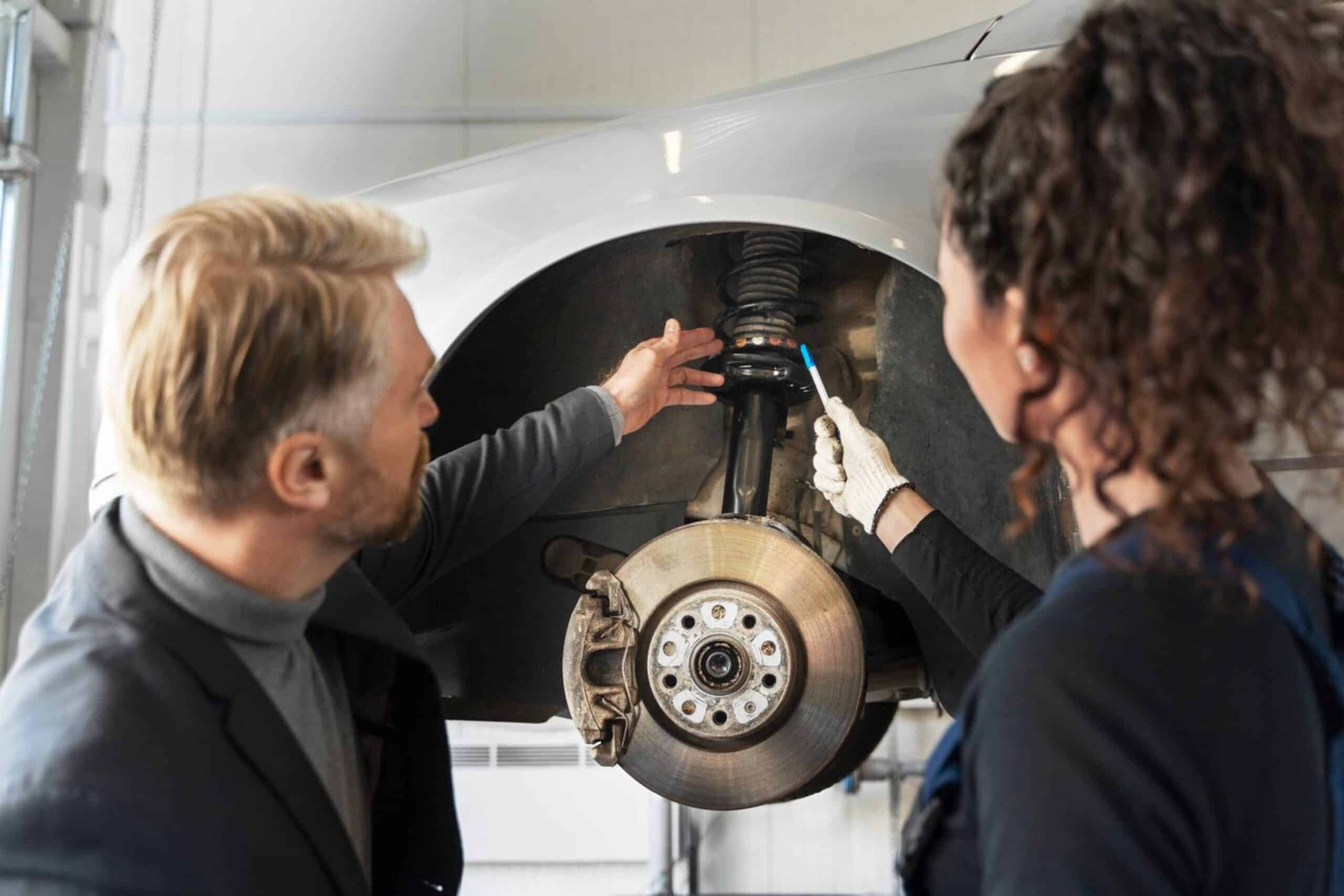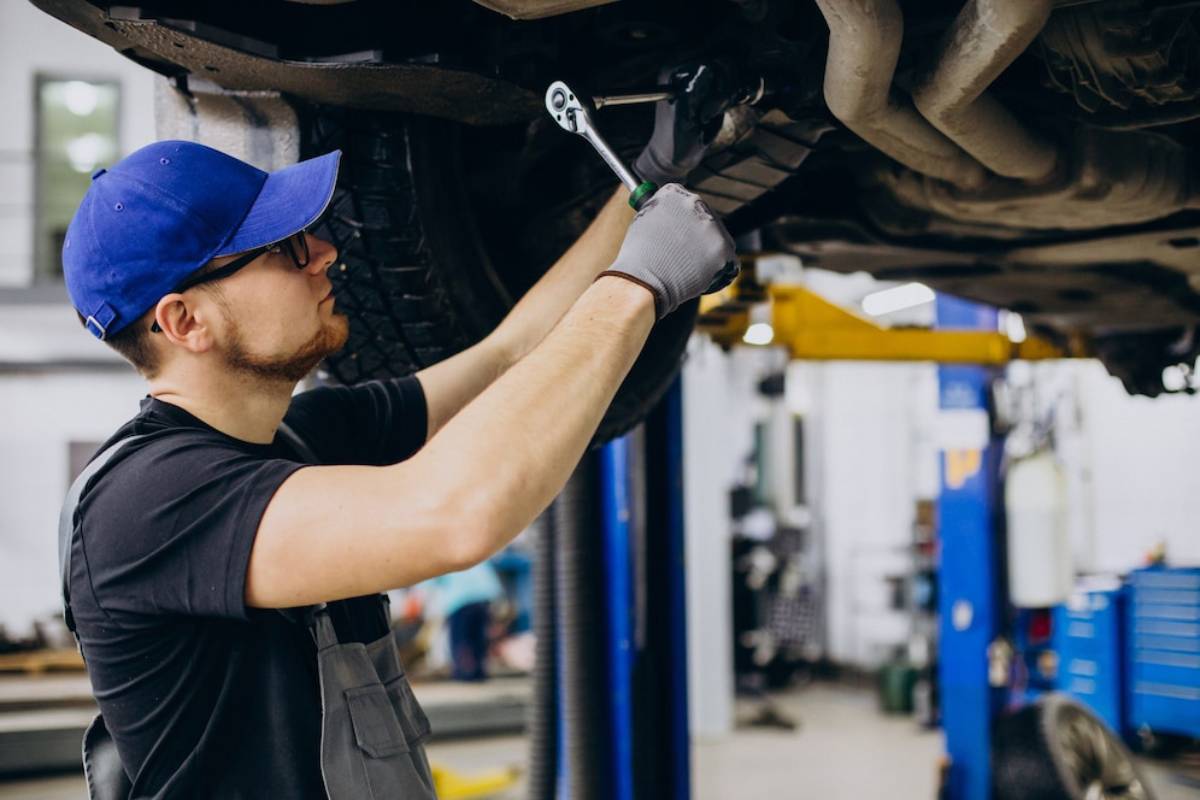
Understanding Adaptive Suspension Systems
Automotive technology has come a long way since the time of fixed shock absorbers and rough rides. Today, cars are smarter and more responsive. They also handle different driving conditions better than ever. One of the most impressive innovations here is the adaptive suspension system. It’s a modern engineering marvel that combines ride comfort with sporty handling.
Adaptive suspension technology helps your vehicle adjust its dampers. This means it can adapt to city streets, country roads, or motorways. It tailors the ride to the road and your driving style. But how does it work, and is it really worth the hype? This article covers the basics of car suspension technology. We’ll see how it improves handling. This will help you decide if adaptive suspension is the right upgrade for your next car.
What Is Adaptive Suspension?
Adaptive suspension, or active suspension, is a system that changes its settings in real time. It aims to improve ride comfort, handling, or both. Adaptive systems differ from traditional suspension setups. While traditional systems use fixed-rate springs and dampers, adaptive systems have electronically controlled parts. These parts adjust based on speed, road surface, steering input, and driving mode.
Key Components:
- Electronic dampers: The heart of the system, these adjust firmness on the fly.
- Sensors: Monitor vehicle dynamics such as speed, steering angle, pitch, and roll.
- Control unit: Processes data and adjusts damping force accordingly.
The result? A system that feels soft and plush when cruising, yet tightens up instantly when performance is required.
How Does It Work?
Adaptive suspension systems check vehicle conditions and driver actions all the time. They figure out the best damping force for each wheel.
Step-by-Step Breakdown:
- Sensors collect data: Measuring factors like wheel movement, acceleration, braking, and steering.
- Control module processes information: In milliseconds, the system calculates the optimal damping force.
- Dampers adjust accordingly: Using magnetorheological fluid, valves, or solenoids, the shock absorbers stiffen or soften in real time.
This ongoing feedback loop keeps the vehicle tuned for the best comfort and control.
Types of Adaptive Suspension Systems
Not all adaptive suspension systems are created equal. Several variations exist depending on the manufacturer and technology used.
1. Semi-Active Suspension
These systems adjust damping force but do not change spring stiffness. Most adaptive suspension setups fall into this category.
Example Systems:
- Audi’s Adaptive Damping Suspension
- BMW Adaptive M Suspension
- Mercedes-Benz AIRMATIC with adaptive dampers
2. Fully Active Suspension
Rare and often reserved for high-end models, fully active systems can adjust both damping and spring rate. They can even counteract body roll and dive actively.
Example: Mercedes’ E-Active Body Control, which uses a 48V system to control each wheel independently.
3. Magnetorheological (Magnetic Ride Control)
It uses a fluid with magnetic particles. When an electric field is applied, the viscosity changes quickly, allowing for instant damping adjustments.
Used by: GM (Magnetic Ride Control), Ferrari, Audi (Magnetic Ride), and others.
Key Benefits of Adaptive Suspension
1. Handling Improvements
Adaptive dampers reduce body roll, pitch, and dive during hard braking, sharp cornering, and quick acceleration. This translates into more confident, responsive driving.
- Tighter steering response
- Better weight distribution during dynamic manoeuvres
- Enhanced cornering grip
2. Enhanced Ride Comfort

The system softens damping when cruising or driving on rough roads. It absorbs bumps and road flaws better.
- Reduces jolts from potholes and rough roads
- Delivers a smoother, quieter ride
- Ideal for long motorway journeys
3. Customisability
Many systems integrate with drive mode selectors, allowing drivers to choose between settings such as Comfort, Sport, or Sport+.
- Tailors the suspension to the driver’s mood or environment
- Gives the best of both worlds—comfort when you want it, control when you need it
4. Safety Enhancements
By optimising contact between tyres and road surface, adaptive suspension improves traction and braking performance.
Drawbacks and Considerations
1. Cost
Adaptive suspension systems are typically found on premium models or as expensive optional extras.
- Adds to the vehicle’s initial cost
- Potentially costly repairs or replacements compared to passive systems
2. Complexity
More electronics and moving parts mean a greater chance of failure or maintenance needs down the road.
- Not all independent garages may be equipped to service the system
- Diagnostics often require manufacturer-specific tools
3. Weight
Although often marginal, some adaptive systems add extra weight—potentially impacting fuel economy or electric vehicle range.
Vehicles That Offer Adaptive Suspension
As of 2025, adaptive suspension is available across a wide range of vehicle segments—from sporty hatchbacks to luxury SUVs.
Popular Models Featuring Adaptive Suspension:
- Audi A4/A6/A7/RS models (with Adaptive Air or Magnetic Ride)
- BMW 3, 5 and 7 Series (Adaptive M Suspension)
- Mercedes-Benz E-Class and S-Class (AIRMATIC, E-Active Body Control)
- Volkswagen Golf GTI and R (Dynamic Chassis Control)
- Ford Mustang GT and Mach-E (MagneRide)
- Tesla Model S and X (Smart Air Suspension)
- Range Rover Velar and Sport (Adaptive Dynamics)
Many manufacturers also offer adaptive suspension as part of a broader performance or technology package.
Is Adaptive Suspension Worth It?
Like most car suspension tech, the value of adaptive suspension depends on how—and where—you drive.
It’s Worth It If:
- You enjoy spirited driving and value handling precision.
- You commute through mixed conditions (city traffic, winding roads, rough tarmac).
- You drive frequently or cover long distances and want improved comfort.
- You want the flexibility to switch between comfort and sport modes.
It Might Not Be Essential If:
- You drive primarily in urban settings at lower speeds.
- You’re focused on reliability and low running costs.
- Your car is a budget-friendly commuter with minimal performance needs.
That said, once you’ve experienced the subtle magic of a well-tuned adaptive system, it’s hard to go back to fixed-rate dampers.
The Future of Adaptive Suspension
With advances in artificial intelligence and vehicle-to-road communication, the future of adaptive suspension looks even more intelligent.
Emerging Technologies:
- Predictive suspension systems that read road conditions using cameras and radar to pre-adjust damping.
- Cloud-based suspension updates via over-the-air (OTA) systems.
- Integration with autonomous driving systems for optimised comfort during self-driving modes.
Expect to see adaptive suspension trickling down into more mainstream models as component costs decrease and demand grows.
Maintenance and Reliability

Adaptive suspension systems require care and regular servicing to maintain performance.
Maintenance Tips:
- Stick to manufacturer-recommended service intervals.
- Avoid cheap imitations or unverified aftermarket replacements.
- Keep software updated—especially for predictive or cloud-based systems.
- If warning lights appear, consult a certified technician with experience in electronic damping systems.
Most modern systems are quite robust, but like any tech-heavy component, they benefit from proper upkeep.
Smart Suspension for Modern Driving
Adaptive suspension represents the future of automotive comfort and control. It combines luxury and performance. It adapts easily to what the driver wants and the road conditions. This creates a unique driving experience. If you’re keen on the latest car suspension tech or want better handling, this system is worth a look. You can consider it for your next vehicle or as an upgrade.
Act now: If you want a new car or are thinking of an upgrade, check out models with adaptive suspension. Test drive them in various settings to feel the difference. Once you try adaptive damping, traditional suspension may seem outdated.